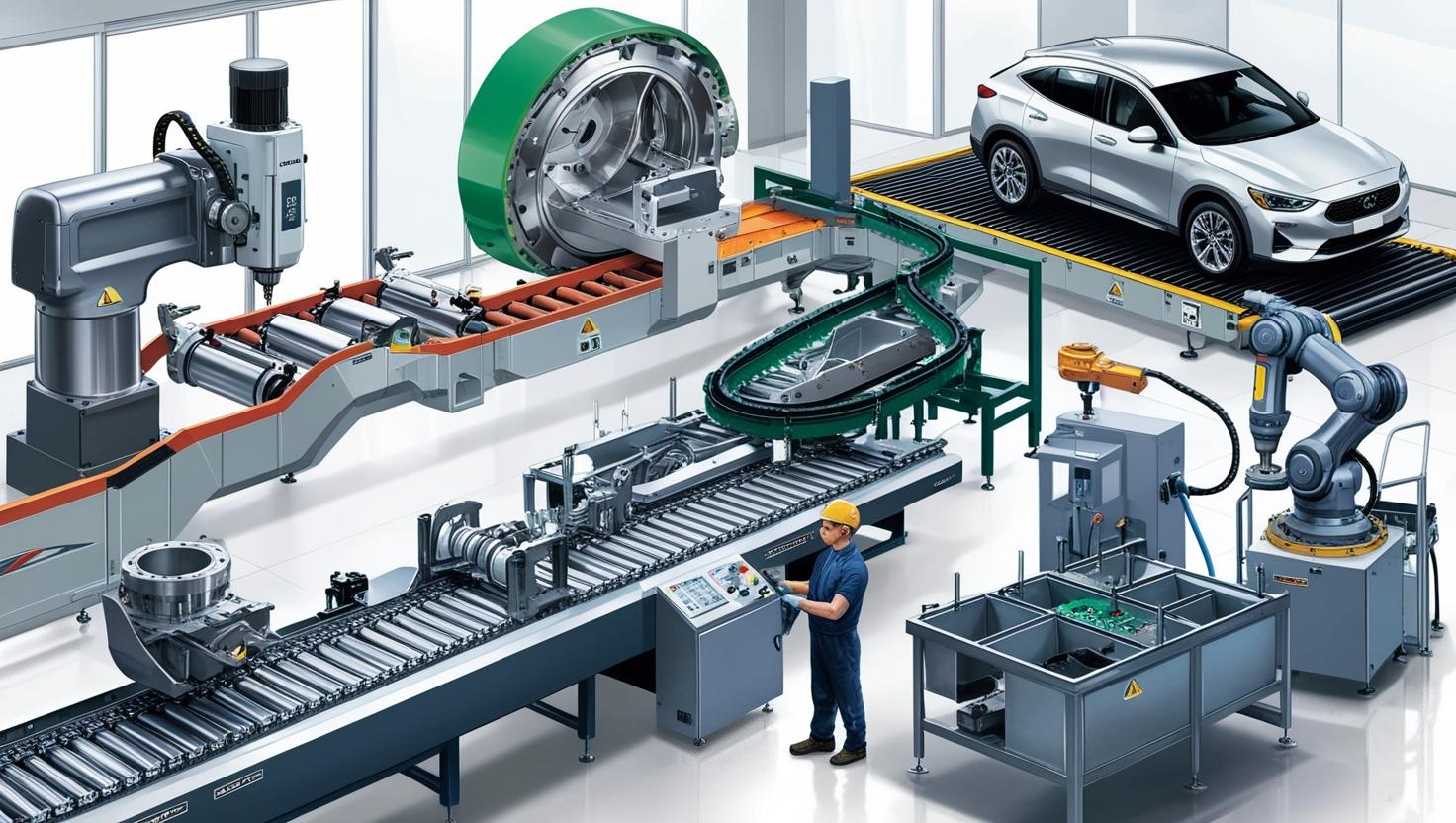The automotive manufacturing equipment industry is undergoing a transformative shift as automation, robotics, and smart technologies reshape how vehicles are built. With growing global demand for electric vehicles (EVs), stricter quality requirements, and increasing pressure to improve efficiency and sustainability, manufacturers are turning to advanced equipment to stay competitive. As a result, the industry is experiencing a surge in innovation and investment, setting the stage for a new era in automotive production.
Driving Forces Behind Industry Growth
Several key trends are fueling the rapid evolution of the automotive manufacturing equipment sector. Chief among them is the rising complexity of vehicles—especially electric and hybrid models—which require more precise and adaptable assembly processes. Traditional manual methods are no longer sufficient to meet the production demands of modern vehicle architectures, prompting a shift toward highly automated solutions.
In parallel, global automotive manufacturers are facing labor shortages, cost pressures, and the need to scale production without compromising quality. These factors have accelerated the adoption of robotics and smart automation systems across manufacturing lines—from stamping and welding to painting, assembly, and inspection. The result is not just higher throughput, but also improved safety, repeatability, and product consistency.
The global automotive manufacturing equipment industry is expected to be valued at USD 31.99 billion in 2025 and reach USD 41.70 billion by 2030, growing at a CAGR of 5.4% from 2025 to 2030.
Robotics Take Center Stage in Automotive Factories
Robotics now play a central role in automotive manufacturing, especially in tasks that require precision, speed, or hazardous environments. Industrial robots handle welding, painting, and heavy lifting, while collaborative robots (cobots) are increasingly used alongside human workers in final assembly and quality control.
Cobots bring a new level of flexibility to production lines. They are lightweight, easy to program, and capable of quickly switching between tasks—making them ideal for low-volume, high-mix production environments often seen in EV and luxury vehicle segments. Moreover, their ability to work safely alongside human operators enhances productivity without requiring extensive safety barriers or major floorplan redesigns.
Download PDF Brochure @ https://www.marketsandmarkets.com/pdfdownloadNew.asp?id=75023639

Smart Automation Enhances Production Efficiency
The integration of automation extends beyond robotics. Smart manufacturing systems now incorporate sensors, real-time data analytics, machine learning, and industrial Internet of Things (IIoT) technologies. These innovations allow manufacturers to monitor and optimize every aspect of the production process.
Predictive maintenance, for example, is enabling manufacturers to identify and resolve equipment issues before they lead to costly downtime. AI-driven quality control systems are capable of detecting defects in milliseconds, ensuring that only flawless parts proceed down the line. Meanwhile, digital twins and virtual simulations are being used to design and test new production setups before they’re implemented on the factory floor, saving time and reducing risk.
Electrification Reshaping Equipment Requirements
The rise of electric vehicles has brought new challenges—and opportunities—to the automotive manufacturing equipment industry. EV production involves different components, such as battery packs, electric drivetrains, and high-voltage electronics, which require specialized handling and assembly equipment.
Battery module assembly, in particular, demands extremely high precision and cleanliness, prompting equipment suppliers to develop automated, cleanroom-capable systems for battery pack production. Furthermore, the modular nature of many EV platforms has driven demand for flexible manufacturing equipment that can quickly adapt to different models or configurations.
Regional Growth and Investment Trends
Asia-Pacific remains a dominant force in automotive manufacturing, with China, Japan, and South Korea leading the way in both vehicle production and automation technology adoption. European manufacturers are heavily investing in smart factories, especially in Germany and Scandinavia, where the focus is on sustainable, highly efficient production systems. In North America, automakers are reshoring and modernizing plants to increase resilience and support the domestic EV transition.
Global equipment suppliers are responding by expanding their product portfolios and establishing strategic partnerships with OEMs and Tier 1 suppliers. Mergers and acquisitions, as well as investments in R&D, are common as the industry adapts to rapidly changing technology and market requirements.
Challenges and Future Outlook
While the future of the automotive manufacturing equipment industry is promising, challenges remain. High upfront investment costs can be a barrier for small and mid-sized manufacturers. Additionally, integrating new technologies into legacy systems often requires careful planning and skilled labor.
However, as the benefits of automation and robotics become increasingly clear—in terms of cost savings, quality improvement, and scalability—adoption is expected to continue accelerating. Governments around the world are also offering incentives for smart manufacturing and clean energy initiatives, further boosting market momentum.
Looking ahead, the convergence of AI, robotics, and digital manufacturing will redefine the automotive production landscape. Factories will become more intelligent, flexible, and sustainable, capable of building complex vehicles at scale with minimal waste and maximum efficiency.
In this rapidly evolving environment, the automotive manufacturing equipment industry stands as a key enabler of the future of mobility, supporting automakers in their pursuit of innovation, competitiveness, and environmental responsibility.
See More Latest Semiconductor Reports:
Automotive Battery Management System (BMS) Market
Semiconductor and Electronics Market Research Reports
FAQ: Automotive Manufacturing Equipment Industry
1. What is automotive manufacturing equipment?
Automotive manufacturing equipment includes the tools, machinery, systems, and robotics used in the production of vehicles. This encompasses everything from body stamping, welding, painting, and final assembly to quality inspection and testing systems.
2. What are the key technologies driving the industry forward?
Key technologies include industrial robotics, collaborative robots (cobots), automated guided vehicles (AGVs), AI-based quality inspection, smart sensors, digital twins, and Industrial Internet of Things (IIoT). These tools enhance production efficiency, precision, and adaptability.
3. How is the rise of electric vehicles (EVs) impacting the industry?
The shift to EVs is significantly transforming manufacturing processes. New equipment is required to handle battery assembly, electric drivetrains, and high-voltage components. This is leading to greater demand for flexible, modular, and cleanroom-capable manufacturing equipment.
4. Why is automation important in automotive manufacturing?
Automation improves speed, safety, consistency, and cost-efficiency. It reduces human error, lowers operational costs over time, and enables high-volume production with minimal downtime.
